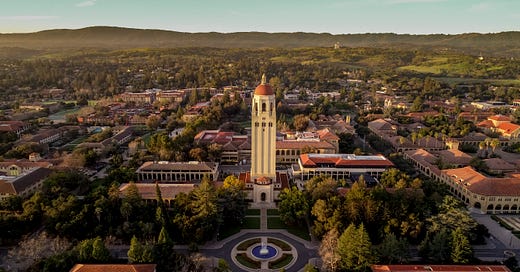Stanford University, located in the heart of Silicon Valley, seamlessly blends a legacy of groundbreaking research with a commitment to developing leaders across all disciplines. Stanford boasts 36 Nobel prize winners, over 650 student organizations, 36 varsity sports – 20 for women and 16 for men, two world-class museums, multiple performance venues, and a college campus unlike any other.
A global leader in research and innovation, Stanford offers high school students a remarkable opportunity to engage with the field of neuroscience through its Stanford Neuroscience Journal Club (JClub). Designed to foster curiosity and deepen scientific understanding, JClub provides a space where students can explore cutting-edge research, analyze scientific literature, and connect with faculty and peers who share a passion for neuroscience.
Unlike traditional mentorship or research programs, JClub is entirely student-driven, allowing participants to take the lead in selecting topics and engaging with experts. To learn more about this distinctive initiative, I had the opportunity to do a Q&A with Dr. Odette Harris, a faculty leader of the program. In our conversation, she provided a refreshingly candid perspective on JClub’s mission, emphasizing its commitment to intellectual exploration over structured career preparation.
The Nest: Learning about the brain can shed light on complex topics like consciousness, memory, emotions, and even mental illness. What are some of the most exciting topics JClub students discuss?
Stanford Neuroscience Journal Club: JClub students are free to discuss any topic that is of interest to them. Topics are not dictated by faculty members. In fact, the students have their own leadership team. As a collective, the students identify topics that are of most interest, and then with the help of the faculty team reach out to the researchers that are working on those topics such as traumatic brain injury and stereotactic radio surgery. The topics change depending on the interests of the students that are participating. JClub is entirely student-driven and university and faculty supported. This interdisciplinary effort focuses on the student.
The Nest: What career paths do students typically pursue after majoring in Neuroscience?
Stanford Neuroscience Journal Club: JClub is a high school neuroscience forum, so it's not a pre-professional group, which means we are not interested in their careers, per se. We're most interested in stimulating, sparking, and sustaining an interest in the neurosciences and or sciences in general for these students. We do ask what they intend to major in when they finish the Journal Club, and the vast majority are interested in continuing their love of the sciences and neurosciences at the college level. Beyond that, we hope that those things will carry through to their interest in life.
The Nest: What are some ways beyond joining the JClub that a high school student could engage in accessing and reading scientific literature?
Stanford Neuroscience Journal Club: The JClub is designed to democratize access to scientific literature, but it is not in and of itself a research entity. It's focused on understanding research so that students can have access to the literature in the world of neurosciences.
The club is a great way for students to learn about neuroscience, develop their critical thinking skills, and network with other students and faculty. Some of the fascinating research happening with Stanford’s Neurosurgery department can be found here.
Some key benefits of joining the Stanford Neuroscience Journal Club:
Gain insights directly from neuroscience leaders.
Sharpen critical thinking and communication skills.
Build valuable connections with peers and faculty.
Expand access to scientific literature.
Members become lifelong learners who are excited about science, and gives them the tools to understand important scientific ideas. JClub is shaping the next generation of thinkers, one fascinating discussion at a time.
Apply to the Stanford Neuroscience Journal Club.
Soar Sooner,
Carrie





